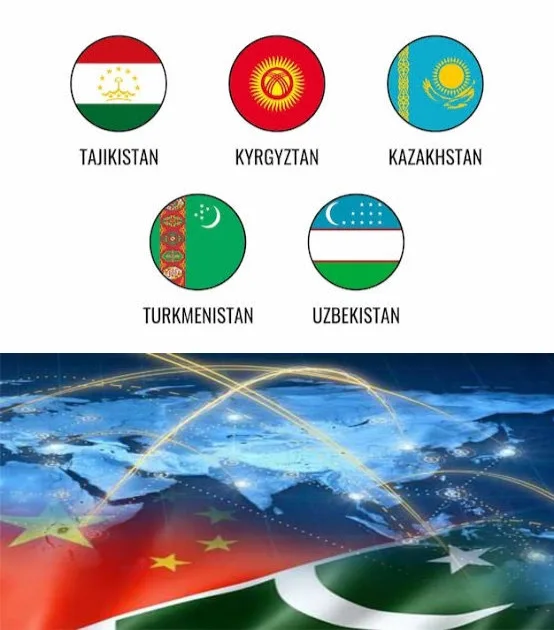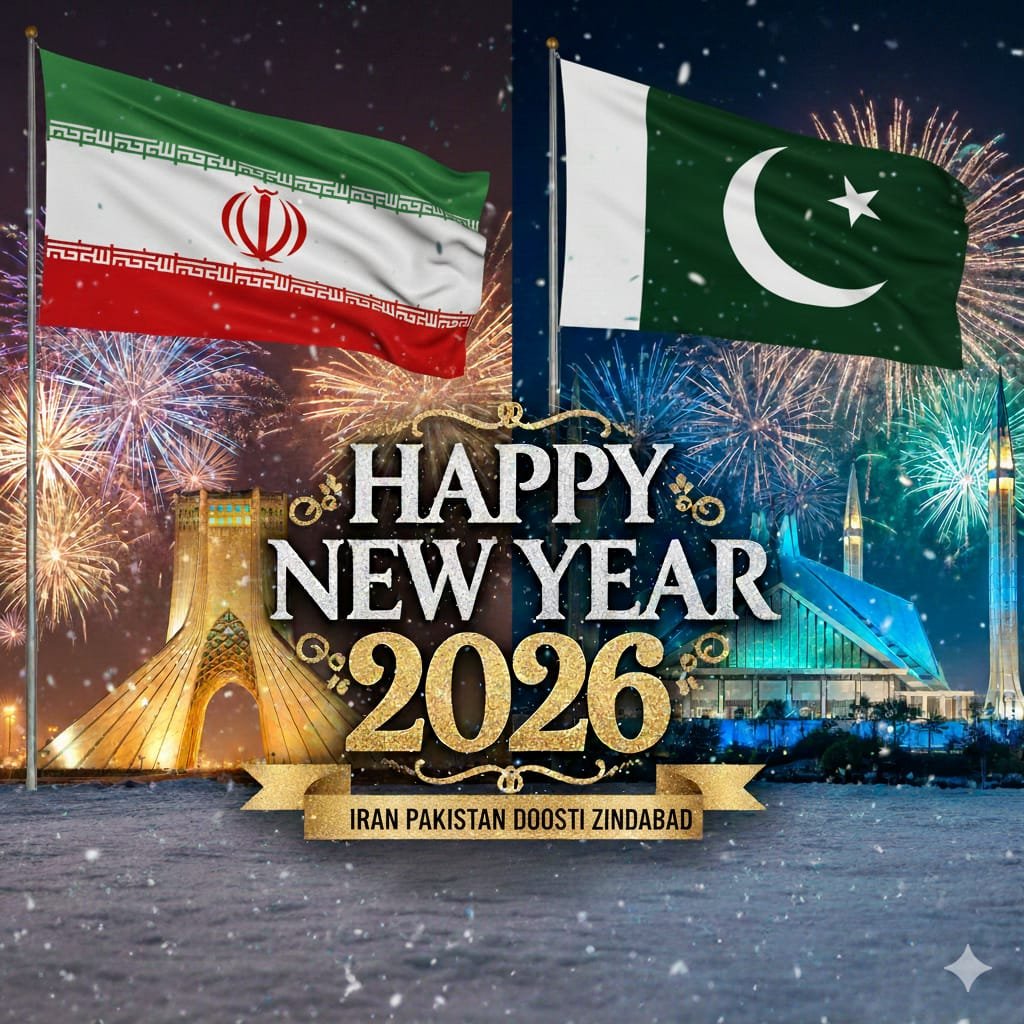Asian economies have achieved remarkable growth since last decade, making Asia as the global economic centre. This tremendous growth of Asian states has highlighted the potential of Asian economies in the increasingly integrated global economy.
In today’s modern era the connectivity has become the global trend, making major projects of inter-regional connectivity crucial for economic development and regional prosperity. In this regard China’s proposed Belt and Road Initiative (BRI) is very crucial for global connectivity. The projects under BRI have become important for Central Asia-South Asia connectivity through CPEC in Pakistan, enhancing bi-lateral and multilateral relations, economic and strategic cooperation, domestic production and providing easy access to the new markets.
Geographically, Pakistan’s location is very vital for Sea and land trade routes, providing access to Middle East, and Africa. This strategic location of Pakistan makes it an attractive option for South Asian and Central Asian countries. The trade transit route through China-Pakistan Economic Corridor (CPEC) in Pakistan provide landlocked Central Asian states to become land linked, enhancing trade and economic relations.
CPEC is strategically located at the cross roads of three regions, linking Central-Asia, South Asia and China. CPEC plays an important role in regional integration, enhancing mutual cooperation, economic growth and also promoting peace and stability in the South and Central Asian region.
This article will highlight the strategic and economic importance of CPEC and Pakistan in regional connectivity, and explore their role in making landlocked nations to become land linked.
Topography of Central Asia, South Asia, and China
Central Asia, South Asia and China all three regions have unique topographic features. Central Asian republics also known as CARs consists of Kyrgyzstan, Kazakhstan, Tajikistan, Turkmenistan, and Uzbekistan. Central Asian region is rich in natural resources like oil and gas etc. This region is also significant for its role in old silk road, connecting Western Asia, South Asia, East Asia, and Europe for trade and travelling purposes. Currently population of CARs is about 78.9 million.
South Asian region consists of Pakistan, India, Bangladesh, Afghanistan, Srilanka, Bhutan and Nepal. Located in Asian continent South Asia comprises of SAARC and Sub-Himalayan nations, connecting countries to east and west. Indian Ocean bounded South Asia in the South, while on land it is bounded by Central Asia, East Asia, West Asia and Southeast Asia. South Asia’s population is about 2.038 billion, covering one-fourth of the total world’s population. It also covers more than 5.2 million square kilometres area, of the world.
The landscape of China is diverse and broad, in north it is bounded by Taklimakan and Gobi Deserts while subtropical forests in the south. In southwest China is bounded by Pakistan; Kazakhstan, Tajikistan, Kyrgyzstan and Afghanistan in west; India Bhutan, Nepal, Myanmar, Vietnam and Laos in South; Mongolia in north; Russia and North Korea in the northeast; South China Sea in Southeast; and Yellow sea and East China Sea in the east. China is separated from South and Central Asia due to Karakoram, Tian Shan, Himalaya and Pamir mountains ranges. China’s population is about 1.425 billion and covering total area of 9.697 million square kilometres.
Role of CPEC in Connecting Central Asia-South Asia
Pakistan’s strategic location provides gateway to landlocked Central Asia to connect with South Asia and China. The China-Pakistan Economic Corridor (CPEC) serves as a tangible embodiment of a visionary initiative, fostering socio-economic progress, strengthening diplomatic ties, and opening up new avenues of collaboration across different regions. Essentially, CPEC epitomizes the broader narrative of the Belt and Road Initiative (BRI), actively advocated and materialized in diverse manifestations. At the heart of the CPEC is the Gwadar Port, playing a crucial role in Pakistan’s emerging role as a central hub for regional connectivity. Gwadar port is connecting three regions at a time i.e., South Asia, Central Asia and Middle east, promoting CPEC as the crucial framework for the regional connectivity.
The geographical connectivity requires high quality roads, railway network and air transportation network with having potential to high growth and cultural exchanges. Regional integration also needs to have high trade volumes, business opportunities, development through win-win models, providing favourable outcomes in form of shared growth, friendship and stability in the region. CPEC is crucial and the only framework ensuring the economic regionalization in the today’s globalized world. CPEC lies on the cross roads of China, South Asia and Central Asia, playing an important role in economic growth, regional trade and people-to-people exchanges via regional integration.
The central Asian nations are located in Eurasia, contains rich natural resources of Oil and gas. However, these nations desiring maritime access and seeking energy resource diversification. Central Asian states are landlocked and lack direct sea access. CPEC stands as the crucial initiative enabling these states to reach the sea and achieve their trade goals. Concurrently, owing to their abundant resources, international nations, including Pakistan and China, are eager to establish robust cooperation with them.
CPEC is providing various opportunities through which Central Asian Republics (CARs) can be facilitated in trade and economic fields. CPEC through Pakistan provide CARs an easy transit trading route and pipeline route to export their energy resources and other products to South Asia, China and Middle east via Gwadar Port.
As landlocked but rich resource states like Azerbaijan, Turkmenistan and Uzbekistan have a vital opportunity to send their natural resources from Russia and export through CPEC to other regions. Further, Pakistan’s access to these energy rich states will help them to overcome country’s energy issues. CPEC has also overcome the slow transportation problems in various states of Central Asia especially in Kyrgyzstan and Tajikistan.
The completion of railway network between Pakistan and China under CPEC will directly provide Tajikistan’s access to Indian Ocean. Turkmenistan is also using the ‘‘Crown Jewel’’ Gwadar port of CPEC to access Indian ocean. The railway and road projects under CPEC will narrow down the distances among regions and promote regional growth and development.
Kazakhstan is working closely with Pakistan and China through CPEC to promote trade, economic and cultural exchanges. Therefore, more than 120 projects of BRI are already operating in Kazakhstan under 1300 Chinese companies.
The mega trans-regional railway project costing $4.5 billion will connect Pakistan, Afghanistan and Uzbekistan that will further revolutionize the regional connectivity. The ML-1 project under CPEC phase-II will connect Karachi-Peshawar-Kabul- Mazar-e-Sharif and Termez, enhancing the connectivity of South Asia, Central Asia, and Europe. This project will provide a lifeline to the trade for an integrated Eurasia. Moreover, CPEC provide new avenue of regional development through mega projects like Central Asia-South Asia-100 (CASA-1000) electricity transmission project and Turkmenistan, Afghanistan, Pakistan and India gas pipeline (TAPI), that envisages the cooperation between regions and states.
CPEC provides strategic opportunities to Central Asian nations to transport their energy resources and goods to the more competitive global and regional markets. Moreover, accessing Central Asia through Afghanistan, Pakistan can export its goods to New markets of Central Asia, and Europe enhancing trade revenue.
In Central Asia, China is investing and constructing infrastructure since 1990s. State owned Chinese companies have developed railways, bridges, roads and telecommunications network in several republics like Uzbekistan, Kyrgyzstan, Turkmenistan and Tajikistan. Chinese approach in Central and South Asia is to eradicate security threats through economic prosperity in the region. CPEC is also an extension to this strategic approach through which China will easily connected to South and Central Asian nations. Through this regional connectivity China can access new markets with huge potential and create strong relations with neighbouring nations.
Conclusion
The China-Pakistan Economic Corridor (CPEC), a flagship initiative within China’s Belt and Road Initiative (BRI), holds the potential to yield significant economic, geopolitical, and social benefits for the region. CPEC aims to enhance regional connectivity by linking landlocked Central Asian nations like Uzbekistan, Turkmenistan, Kazakhstan, Tajikistan, and Kyrgyzstan to the Arabian Sea through Pakistan’s Gwadar Port. This corridor provides these countries with an alternative and efficient trade route, diminishing their dependence on traditional pathways and expanding their access to South Asian and global markets. CPEC facilitates the movement of goods by fortifying transportation infrastructure, including roads, railways, and pipelines.
CPEC has lightened up the prospects of regional integrations and socio-economic connectivity and evolved as enduring sustainable and effective connecting hub among South and Central Asia. To ensure peace and stability in the region, China prioritizes the development of neighbouring countries by investing in infrastructure. Economic development is seen as the effective means to alleviate adverse conditions and guarantee peace and security in the region. China’s aim to link South Asia with Central Asia through CPEC is geared towards fostering economic prosperity. CPEC is not designed to instigate competition or rivalry; apparently, it is intended for peaceful coexistence.
Consequently, all connectivity projects are gaining popularity because of CPEC. The increasing regional integration has the potential to bring positive transformations to the region, and infrastructural development will be a contributing factor in maintaining regional stability.
Chairman, Board of Experts, Pakistan Research Center for a Community with Shared Future (PRCCSF), Islamabad.







